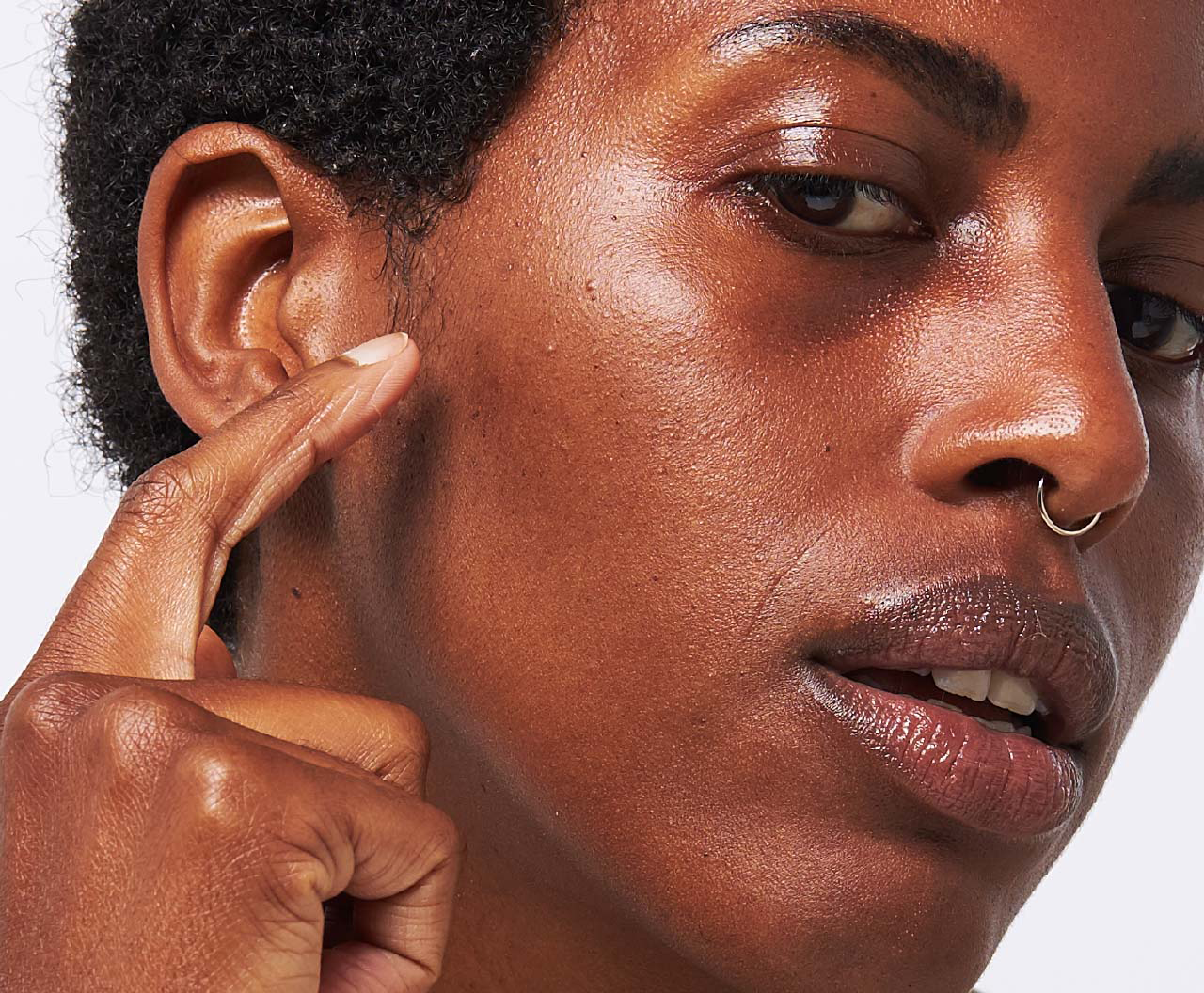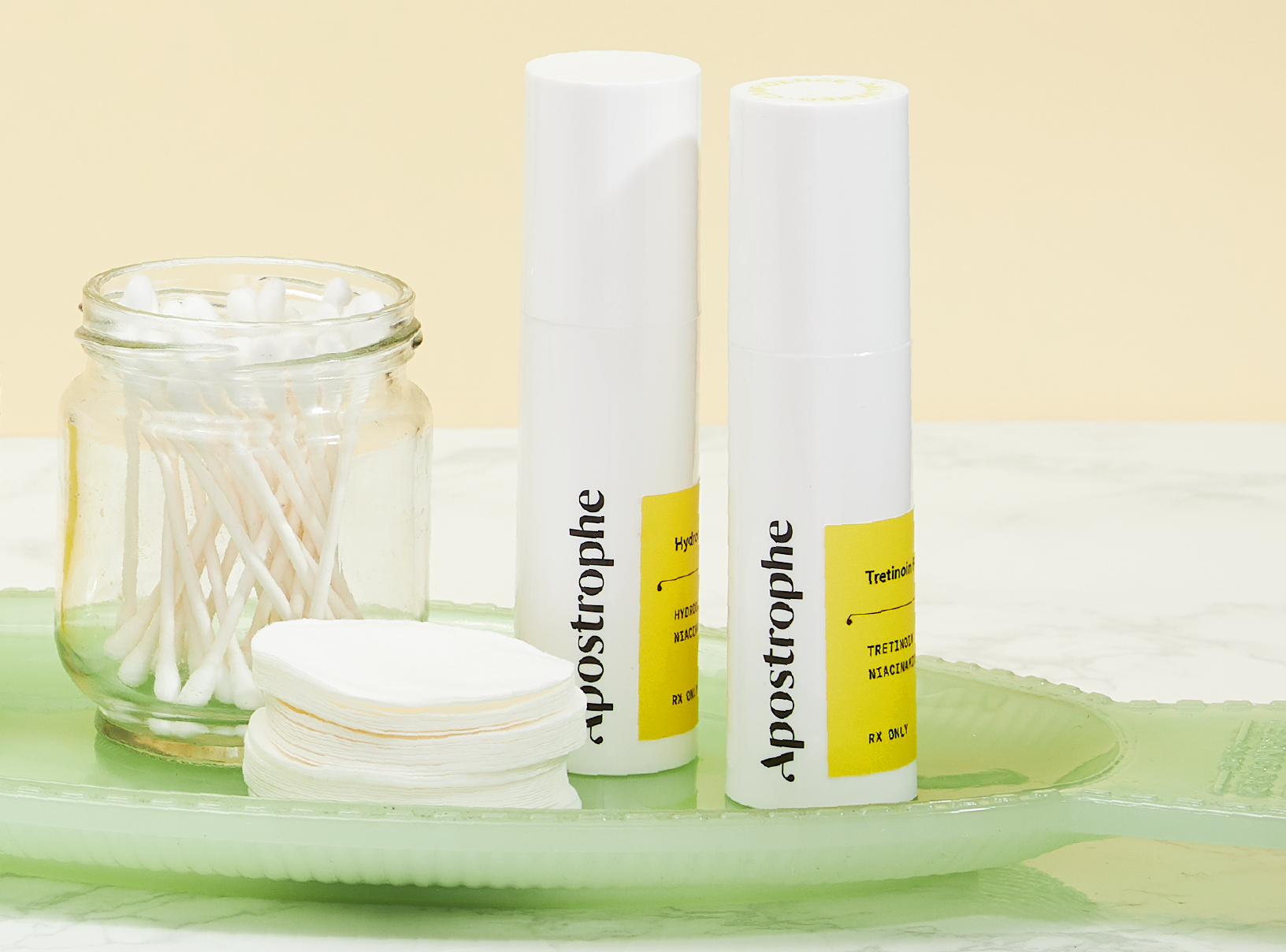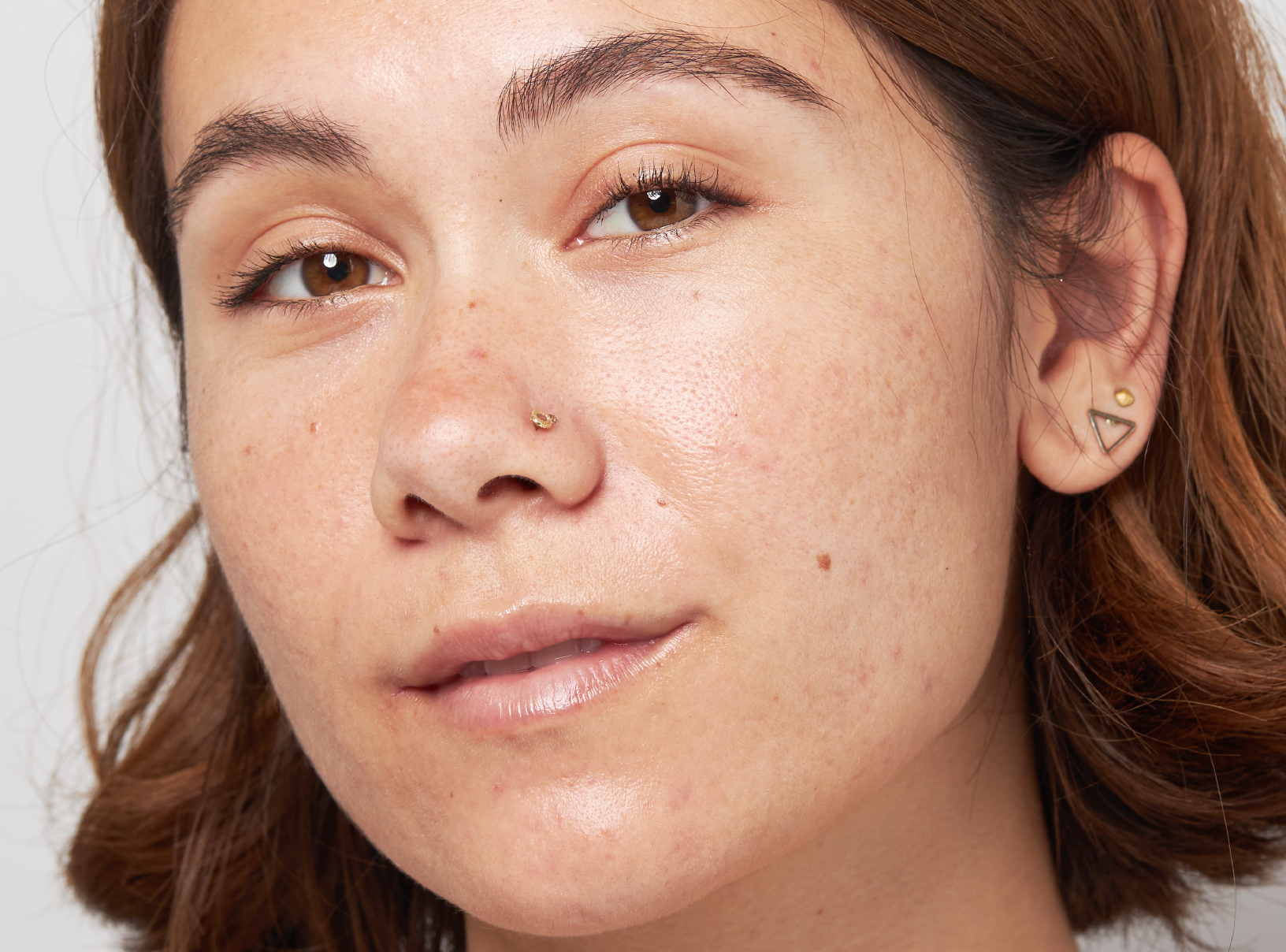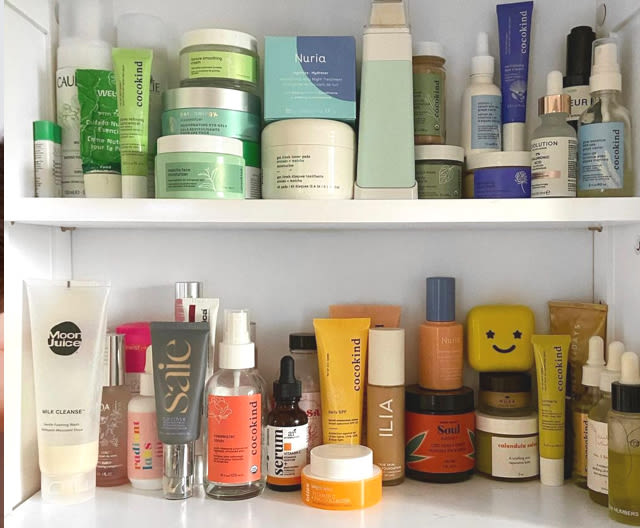Education
How to Apply Hydroquinone | Apostrophe


SHARE
Education
How to Apply Hydroquinone | Apostrophe
Medically reviewed by Aimee Paik, MD
Written by Apostrophe Team
Last updated 1/3/2023
Searching for a solution to help you achieve a more even skin tone? Hydroquinone could be the skin lightening agent you need to squash those unwanted spots on your chin, cheeks, and forehead that have been leftover from things such as a stubborn breakout or too much time spent in the sun without the proper SPF.
Looking and feeling your best starts by educating yourself on the available products on the market, what they’re used for, and how they can complement your skin. In this blog, you’ll learn everything you need to know about hydroquinone, why it’s effective, how long does it take for hydroquinone to work, and how you can safely incorporate it into your skincare routine.
How to Apply Hydroquinone
If you’ve made the decision to add hydroquinone to your skincare routine, you’ll want to be sure you introduce a new product to your skin with care and caution. Especially if you tend to have sensitive skin, it can be a bit scary adding something new into the mix without knowing for sure how your skin will react.
Be sure to consult with your dermatologist if you have any specific questions after going over the general guide to hydroquinone application below:
As with any new product, start by doing a patch test. Apply a small amount of the hydroquinone product you’ve been prescribed to a clean patch of skin on your wrist or forearm. Monitor the area for 24 hours to be sure no irritation or allergic reactions occur.
If all goes smoothly with the patch test, you may proceed with the first application on your face. Be sure your face is clean and dry. (It’s best to use this product before any others.)
Apply the hydroquinone product in a small, thin layer, targeting only the areas of your skin that you wish to lighten.
This may change depending on what your dermatologist recommends but most hydroquinone products are suitable for use once or twice daily. If you miss a dose of hydroquinone, do not try to make up for the missed dose by doubling up on your next application.
As mentioned above, be sure to avoid contact with eyes, mouths, and other products—particularly those containing peroxide.
After applying, wash your hands thoroughly with soap and water in order to avoid bleaching other parts of the skin.
Finally, leave plenty of time in between the application of hydroquinone and the use of any additional skincare products such as sunscreen, hydrating skin lightening cream, or serums. It’s best to allow it to fully absorb before applying other products.
Monitor results along the way and make adjustments to your routine as needed. In most cases, it is safe to use hydroquinone for up to six months.
Hydroquinone: Everything You Need to Know
Before trying out a new product on your skin, it’s best to have some knowledge about what that particular product is and how it’s typically used. Hydroquinone doesn’t exactly roll easily off the tongue, but its primary use is quite simple: It’s a cosmetic answer to unwanted dark spots on your skin.
Hydroquinone can be applied to areas of postinflammatory hyperpigmentation on your face and, over time, will work to target multiple layers of skin tissue to lighten from the inside out. Once sold as an over-the-counter solution, it’s now only available in hydroquinone cream, gels, and emulsions as prescribed by a dermatologist. You’ll usually find it in topical form.
Not sure if hydroquinone is the answer to your skin concerns? Find out more about its specific uses below.
What is Hydroquinone Commonly Used For?
If you’re an avid photographer, you may have heard of hydroquinone before. Outside of the skin care world, this active ingredient can be found in the darkroom used by photographers as a developing agent—targeting silver halides, specifically.
Back in the realm of skin care, however, it is commonly used to provide cosmetic treatment for a number of skin conditions including:
Acne scars
Melasma
Age spots
Unwanted freckles
Things like melasma and freckles can come about due to a change in hormones. For example, women may notice them more during pregnancy or even after trying out a new form of birth control. However, you can take action to prevent age spots and acne scars. Applying SPF regularly or avoiding the urge to pick at pimples may help to stop these conditions before they start.
Whatever is triggering your hyperpigmentation, hydroquinone could be a viable path towards a clearer, more even complexion. Before diving right in, it’s important to be advised about a few possible side effects.

HYPERPIGMENTATION TREATMENT
Target dark spots and hyperpigmentation with customized prescription treatment.
What Are the Common Side Effects of Using Hydroquinone?
In general, hydroquinone is safe to use on a number of different skin types. However, we always recommend consulting with a dermatologist before using it. Besides, you’ll need to see one in order to get a hydroquinone prescription.
Since your doctor knows more about the specifics of you and your skin, they’ll be able to provide more information about what to expect in terms of side effects, if any.
For now, here’s a look at what could come along with daily use of hydroquinone:
Dryness
Mild irritation such as stinging or burning
Redness
Itchiness due to dry skin
In rare cases such as in the prolonged overuse of hydroquinone, individuals may develop a condition called ochronosis. This condition is often characterized by gray, blue, or black discoloration on the skin of the face or ears. To avoid serious side effects such as these, be sure to follow the instructions as provided to you by your dermatologist.
How Effective is Hydroquinone?
Hydroquinone works in different ways for different users but, when used properly, it can be a highly effective, skin lightening treatment. Hydroquinone users often see results after about four to eight weeks from the initial application, so be sure you’re watching for progress along the way. Consider taking weekly pictures of the targeted areas to keep an eye on improvement. If you’re not seeing the results you were hoping for after about three months of use, check in with your dermatologist to see what can be done.
Hydroquinone is most effective when:
Users limit the amount of time they spend in the sun. When using hydroquinone, it’s often advised to apply a minimum of SPF 30 daily and avoid the use of tanning beds. Wide-brimmed hats and shade are other very important sun protective measures. Some hydroquinone products contain SPF already, so be sure to read the label carefully and ask your dermatologist if you have any questions.
Used in combination with tretinoin (derived from Vitamin A) which can sometimes speed up the lightening process.
When Should You Avoid the Use of Hydroquinone?
Again, hydroquinone has been known to be a safe skincare solution for just about anyone, provided they follow the suggested methods of use. However, hydroquinone should not be used:
By anyone who is pregnant or breastfeeding.
In combination with other products containing peroxide such as benzoyl peroxide or hydrogen peroxide.
If you have any known allergies to peroxide or to hydroquinone itself
On any open wounds, sunburned skin, or irritated patches of skin
To be sure you’re using hydroquinone properly, follow the application guide below as well as the expert advice provided to you by your doctor.
Is it Safe to Use Hydroquinone?
Hydroquinone has been approved by the FDA as a safe hydroquinone acne scar treatment for hyperpigmentation. As long as it is prescribed and used according to a dermatologist’s guidance, there is no concern about the safety of incorporating it into a daily skincare routine.
In September of 2020, however, the FDA prohibited the sale of over-the-counter hydroquinone topical treatments. This was mainly due to concerns regarding the overuse of the product, even when sold in lower concentrations.
Currently, hydroquinone is only available when prescribed by a licensed dermatologist or healthcare provider.
Still have questions? Ask the experts at Apostrophe.

CUSTOMIZED HYPERPIGMENTATION TREATMENT
Get customized treatment for your dark spots, melasma, and hyperpigmentation.
Consult with a Dermatologist Online with Apostrophe
You deserve to feel confident in the skin you’ve got. Whether you’re hoping to manage melasma or say goodbye to dark sunspots, hydroquinone could be the active ingredient that’s missing from your skincare plan. If you’ve still got questions about how to use hydroquinone, address your concerns with Apostrophe.
Apostrophe is revolutionizing the way you do skincare. Here’s how:
Get a customized treatment plan from a board-certified dermatologist from the comfort of your own home.
Start by visiting our website and providing details about the specifics of your skin and your skincare journey thus far.
Snap a few photos and send them over to your dermatologist or healthcare provider so they can better assess your skin type and condition.
Get a personalized treatment plan within 48 hours, with products that can be delivered right to your front door.
Plus, if you have any questions along your journey, our care team is just a quick message away. Start changing how you feel in your skin—connect with an expert at Apostrophe and get a personalized acne treatment plan today.
Sources:
American Osteopathic College of Dermatology. Hydroquinone.
https://www.aocd.org/page/Hydroquinone
Dermnet. Hydroquinone. https://dermnetnz.org/topics/hydroquinone/
US National Library of Medicine. Hydroquinone.
https://www.ncbi.nlm.nih.gov/books/NBK539693/
Shop this post

Hydroquinone

Tretinoin
Like what you just read? Sign up for our email list to get the scoop on skincare science delivered straight to your inbox.

Education
What is milia?
What is milia? Today, we’re jumping into one type of bump that you may have heard about most commonly in infants — milia.
Read More
Education
Best moisturizer for acne-prone skin
If you have combination acne-prone skin, figuring out which moisturizer is best for your skin might be tough. In this guide, we break down the best moisturizer for combination, acne-prone skin.
Read More
Education
How to build a face care routine
As you get into skincare, it might seem overwhelming, especially trying to figure out the order you're supposed to apply products in. Below, we detail how to build a face care routine for your skin!
Read More